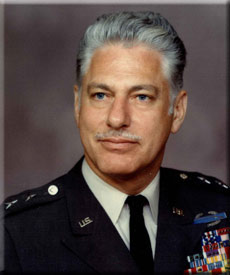The Gray Ghost: Good Enough to be a Wolfhound

by Howard Landon McAllister
Tales of the Wolfhounds has but one purpose. It is to record the history and experiences of the men who served in the 27th United States Infantry in the Vietnam War. This article may be our sole departure from that mission, but in this one instance, it is important to do it.
It is not a stretch to say that there are men who served in the Wolfhounds in Vietnam who are alive and walking around today only because of the way some of our leaders did their jobs. And it is worth consideration to believe that number of fortunate individuals will continue to be extended to include many Americans yet unborn.
Men from other services and branches of the Army fought and died alongside Wolfhounds. In addition to the other combat arms, these men represented Army aviation units, Air Force forward air controllers, medics, scout dog handlers, engineers, soldiers from supply, signal, transportation and maintenance units, and at least one Army combat photographer. They were all our brothers-in-arms, shared the same danger and discomfort, and made the same sacrifices, sometimes at the price of their lives. During the war, we treated our relationships with others in the light-hearted fellowship of soldiers. We would sometimes say, “You’re good enough to be a Wolfhound.” They might answer back, “Yes, but we’re too smart to stay out here long with you guys,” or something like that.
In 1969, when both Wolfhound battalions were assigned to the 3d Brigade of the 25th Infantry Division, the brigade commander was Colonel William J. Maddox. He has been mentioned in various articles here, and he was a rarity—an infantry brigade commander who was also an Army aviator. Most of the men in the infantry battalions of the brigade remember at least one occasion when he flew into an LZ in the vicinity of a firefight or other contact, got out of his helicopter, blades still turning, swapped his flying helmet for a steel pot, then looked for the ground commander, to find out what was happening on the scene. His question was always the same, “How can I help you?” After he got his briefing, he went back to his helicopter, switched helmets, climbed back into his seat, pulled pitch and started delivering the assistance needed by the ground unit.
If it had to do with air support, he knew how to do it. And when it came to air support using helicopters, he probably wrote the book on how to do it. He got Wolfhound units out of trouble, and back in control of a fight on many occasions.
We always called him the “Gray Ghost.” The name was based on his appearance, with steel-gray hair and mustache, and from the way he would suddenly appear over the battlefield, in a Huey C&C helicopter, blades flashing and “whopping.” We learned to count on his presence when a contact was underway.
One of the Delta Company Wolfhounds said Colonel Maddox looked like Richard Boone, the actor who played the television gunslinger in Have Gun, Will Travel. The soldier got an immediate argument from another man in his squad, “No way. The Gray Ghost is a lot more studly-looking than Boone,” he said.
Major Charles C. Darrell, who was Executive Officer of the Second Wolfhounds during mid-1969 has a favorite story about Colonel Maddox:
“By a quirk of fate, at that time, the 3rd Brigade of the 25th Division consisted of the 1st and 2nd Battalions of the 27th Infantry. Colonel Maddox, the Brigade Commander, shared the danger with his troops,” said Darrell. “He flew his own helicopter to the hot spots and always found a way to help the ground commander, instead of giving stupid orders over the radio.”
"Let's give Colonel Maddox a 4th of July present," said Major Darrell to Captain Patrick Johns, the headquarters company commander. "Paint up a sign that says 'Headquarters, 27th Infantry Regiment' and we'll sneak up there tonight and put it up over that wimpy 'Headquarters, 3rd Brigade' sign,” ordered Darrell. The next day, the 27th Regiment sign was still in place on the brigade headquarters.
Colonel Maddox asked Darrell, "Don't you have more important things to do than make signs?"
Darrell decided to gut it out. "Sir, you've done an excellent job commanding this regiment," he replied. "We decided you're good enough to be a Wolfhound." We were sure the Gray Ghost hated to take down the Wolfhound sign.
When Colonel Maddox left the division near the end of the year, he flew out to the Wolfhound fire support bases with his successor. Afterwards, as they flew away, his voice came over the radio, “This is Gray Ghost. Good luck, Wolfhounds. You’re the best.” We thought he was the best.
After the war, he continued to rise in the Army. He retired as a Major General in 1977. His last assignment was commanding the Army Aviation center and Fort Rucker, Alabama.
His service went back to World War II, and included three tours in Vietnam. He had more than 10,000 flying hours, including 4,000 in combat in Korea, Vietnam, and Cambodia.
He died on January 5, 2001 and is buried at Arlington National Cemetery.
Farewell—Wolfhound.
Copyright 2006, Howard Landon McAllister
